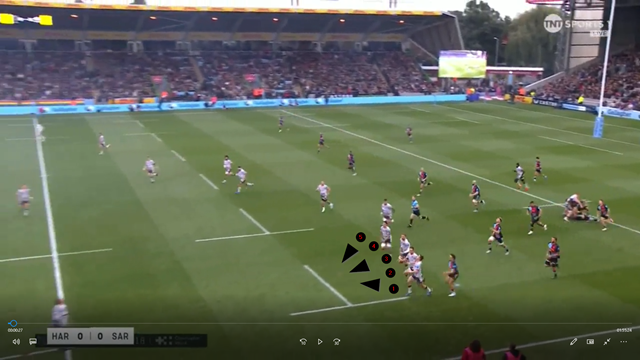The modern game of Rugby is always in a state of evolution, with refereeing guidelines and protocols, law amendments and new trials in a constant flux of give-and-take, ebb-and-flow. One of the most recent tweaks involves removing the protective screen around the catcher of a high kick, the ‘escort service’ which regularly prevents a chaser from making a legitimate competition for the ball in the air.
The latest iteration of that screen if often called the ‘glove defence’ – a five- pronged gauntlet which fits snugly around the ‘hand’ of the defensive receiver. A good recent example occurred at the beginning of the English Premiership game between Harlequins and Saracens:

After the box-kick is launched by Harlequins’ #9, the job of the five defenders tracking back from the previous ruck is saturate the space around the ball in front of the receiver, making it impossible for the chaser to contest realistically for the ball in the air.
The recent international between England and the All Blacks at Twickenham was played out under the new guidelines, which demand that defensive players in front of the ball clear out and away from the landing zone and allow the chaser access to the ball. The difference was marked:
In both cases, the two England defenders nearest the play, who start in front of the ball, end up tracking back behind the defensive receiver rather than attempting to soak up the space in front of him. That gives the chaser [wing Mark Telea] clear and unimpeded access to the ball in the air, and it becomes a straight jumping contest with no external interference.
Summary
The outcome is a much cleaner, quicker-developing outcome to the play. If a faster game with results that are more easily understandable to the ‘average joe’ onlooker is the aim of World Rugby and its law-making, then such law-trials surely put it in the right track to success.
Watch ex All Black and Black Fern’s World Cup winning coach Wayne Smith’s excellent video on how to Receive the High Ball.













.jpg)

.jpg)






